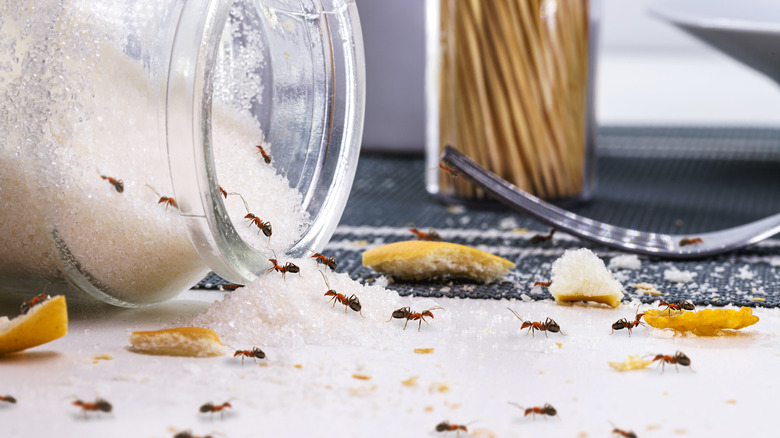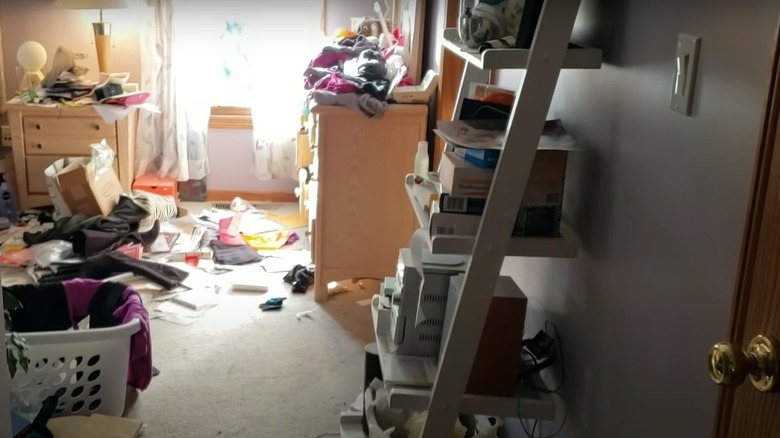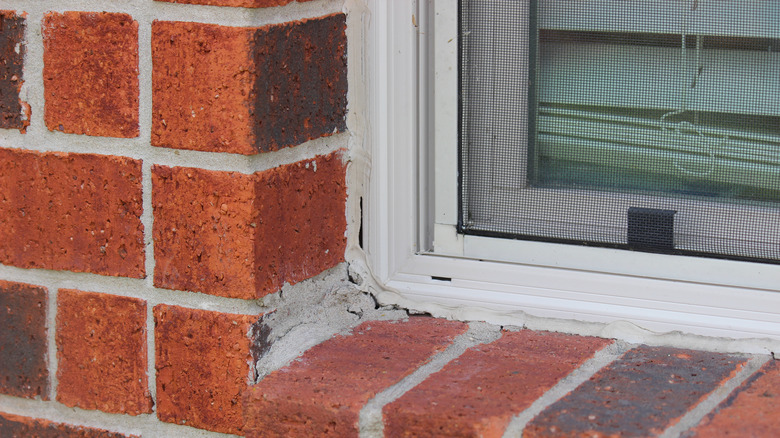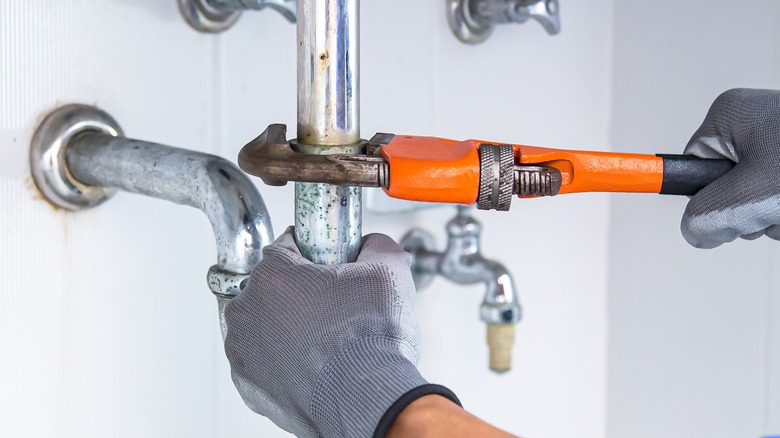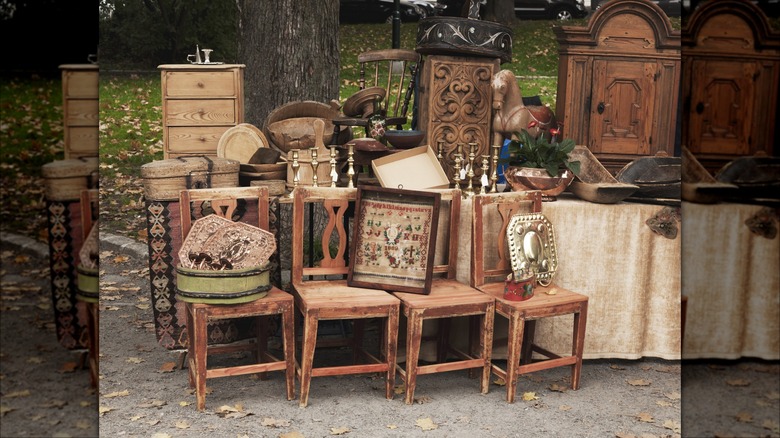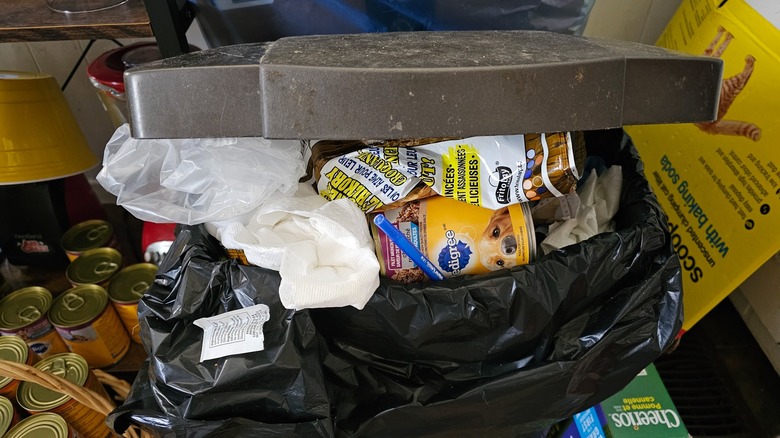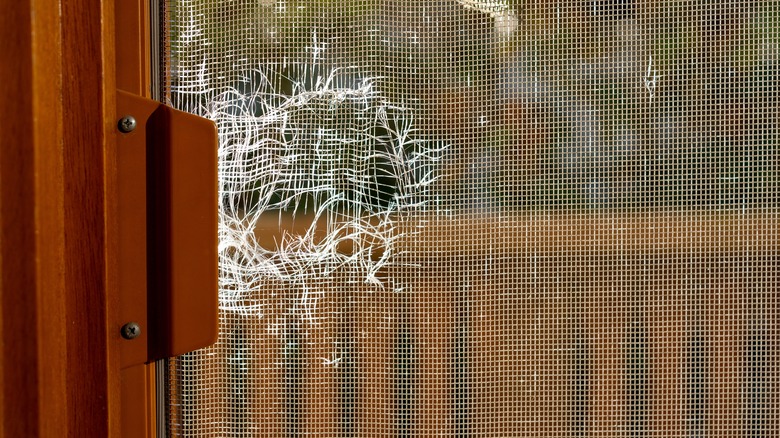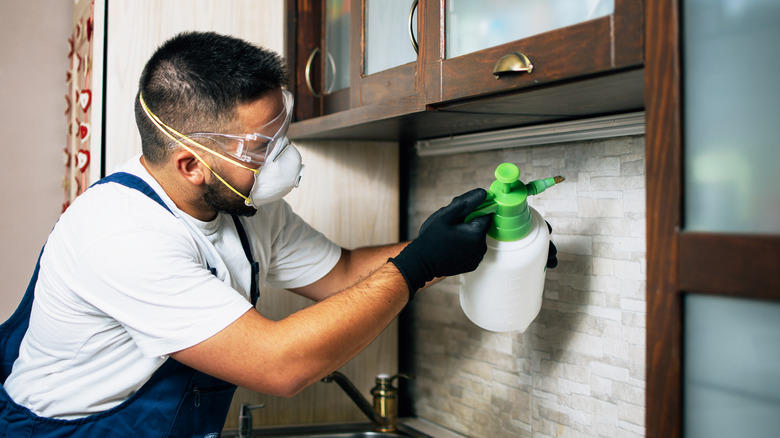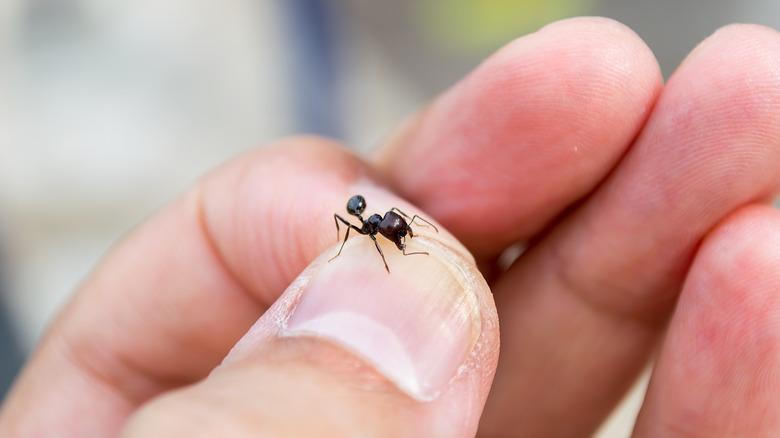Whatever You Do, Don't Make These Mistakes That Attract Pests To Your Home
Ants, cockroaches, mice, and other pests are more than just annoying. They have the potential to do serious damage to your home and your belongings. If you can't seem to keep these bugs and rodents away from your home, it likely means you're making one or more mistakes with how you organize or care for your home. Fortunately, a few simple changes to your routines and taking care of some home maintenance tasks should be able to help you return your home to the pest-free oasis that you desire it to be.
If you've recently moved into a new home, it is possible that you may not even be aware of some of these potential mistakes. Nonetheless, you'll want to learn how you can remedy the mistakes made by the previous owners so you can feel comfortable in your new home. Read on to learn what you want to stop doing and what changes you should start implementing.
Not cleaning up cluttered areas
Leaving clutter around your home is a mistake you will want to avoid to keep mice, cockroaches, and other pests away. Piles of paper, trash, and other items are very attractive to these bugs and rodents. They see the clutter as a source of survival. They can find food or crumbs more easily in cluttered messes than on a clean counter or floor, may be able to access water to drink from nearby leaky pipes or dripping faucets, and can remain safe and sheltered for extended periods of time in and between your piles of belongings and trash.
One of the first things you'll want to do to prevent pests from entering your home or to address a current infestation is clean up the home. Throw trash away, organize and file papers, fold laundry, and put anything else away that could serve as a place of refuge for small critters. Keep the pests from settling in, because once they do, your problem is only going to get bigger as they reproduce and create more pests that could take over your home.
Not storing food properly
You may also be inadvertently inviting pests into your home if you're not properly storing food items. Bugs and rodents look for sources of food, so if they find anything that is accessible to them in your house, they're more likely to settle in and make themselves at home. Storing pantry items in resealable, airtight containers is one important thing you can do to keep it inaccessible. While an open bag or box of chips, cereal, or sugar will be easily penetrated by pests, they won't be able to get at the contents of a sealed container. After reorganizing your pantry and repackaging items, wipe the shelves down to remove the temptation of crumbs and sticky residues.
You can also try storing more of the items that you'd typically keep in the pantry in the fridge or freezer instead. For example, items such as flour, sugar, nuts, and coffee can go in one of these appliances instead to keep them unreachable. Finally, be sure to eat or refrigerate fruits as they ripen. Leaving an overripe peach or plum out on the counter is a recipe for disaster; ants, flies, and fruit flies will show up in no time.
Leaving cracks or holes in the walls or foundation unsealed
A small crack in the siding or foundation could be more than sufficient to allow for a huge infestation of pests. As a point of reference, spiders and insects can sneak in through holes or cracks that are 1/16-inch or even smaller, mice can get in through openings that are just ¼-inch wide, and even rats can make it through a hole that is just ½-inch across. If you want to avoid creating this "open door" pest policy in your home, then it is time to start sealing any holes or cracks.
To tackle this job, you'll need a caulking gun. Walk around the perimeter of your home, and look for any openings that need to be sealed. Remember, even tiny openings will let bugs in, so walk slowly and perform a thorough inspection of the property. You will also want to seal any holes around where utility wires are entering the home. You can use either silicon or acrylic latex caulk. Silicone caulk is more flexible, however with a latex caulk, you will be able to paint over it to match the siding or foundation of your home. Additionally, searching for a clear caulk may be a better option for beginners, as any imperfections in your application technique will not be as noticeable.
If there are gaps beneath any exterior doors, these will also allow bugs to get on. Consider purchasing a door sweep to install under these entrances to better pest-proof your home.
Not cleaning appliances and dishes promptly
Keeping up with your household chores — particularly in the kitchen — will be key in preventing an infestation. As already mentioned, one of the main reasons bugs and rodents enter a home is to find food. If you have crumbs around the toasters, residues from spills near your stove or countertop, or half-eaten meals sitting on dirty dishes on the counter, you'll be providing these pests with exactly what they're searching for.
Taking a few extra minutes after eating a meal to clean up can go a long way in keeping your home free of pesky intruders. Wash dishes promptly and dispose of the uneaten food scraps — either in a covered trash can or compost bin or down the garbage disposal (if appropriate). You'll also want to make a point of wiping down your countertop and stovetop after preparing a meal. When you remove the food source from the bugs, they'll likely move on to find what they need.
Not addressing leaks and other water issues
Food isn't the only thing that can attract insects and rodents to a home. They are also drawn to moisture. In fact, some of these creatures could survive for up to a month without food as long as they can find a source of water. Depending on the type of water problem you have, different pests may be attracted to your home. For example, while wood-destroying insects, such as termites, love moist wood, rats, cockroaches, and some other pests are drawn to damp areas in the home. Still other insects — such as mosquitoes — congregate around areas with standing water.
So, what does all of this mean you should do? Remediate moisture issues promptly. Start by fixing any leaky pipes to cut off the source of water, if necessary, hire a waterproofing company to deal with drainage issues or leaky basements. Once you've addressed the causes of the excess moisture in the home, dry out the damp areas and replace flooring or drywall as necessary. It is also important to avoid leaving buckets or tubs of standing water in the home. By taking all of these steps, you'll simultaneously be protecting your house against mold, mildew, and rotting wood, so it's really a win-win!
Not thoroughly inspecting any second-hand furniture before bringing it into your home
You can find some great deals and really interesting pieces shopping for furniture at yard sales, flea markets, and second-hand stores. However, you'll be making a big mistake if you just bring any of these finds into your house without first performing a thorough inspection. Bed bugs could be hiding in old mattresses as well as other furniture pieces, and the last thing you want to do is introduce them into your home.
To check over each piece, start by looking at it closely using a flashlight. Open drawers and remove covers so you can really see everything. If you see any bed bugs — whether living or dead — pass on the item. Even if you don't see any actual bugs, they could still be hiding, so you'll want to look for other signs of an infestation. One of these signs is a musty smell, similar to what you may associate with berries. This odor, caused by the pheromones bed bugs release, could be another sign that they're present. Small, dark stains left from blood droppings on the piece could also be indicative of bed bugs.
Because bed bugs can survive for up to 12 months with no food, the safest choice is just to pass on the furniture piece. However, if you fall in love with a particular piece or have no option other than to purchase used furniture, there are a few things you can do to help make sure that any bed bugs are killed before bringing the item into your home.
Bed bugs are killed by heat — but the temperature must remain at or above 113 degrees Fahrenheit for a minimum of 90 minutes. Steam cleaning may be an effective way to kill any that are hiding in upholstery. Alternatively, you could seek the help of a professional extermination company to find out the best options, such as using bug bomb chemicals, to make sure that you won't suffer any repercussions if you bring the furniture item into your home.
Letting too much trash accumulate inside
Another household chore that you don't want to overlook is taking out the trash. As the trash sits around inside the home, it is only going to attract more insects and rodents. Take it out frequently — at least every few days and more often if it is full or you have just thrown something particularly enticing, such as the rinds from a melon or a chicken carcass.
Leaving some trash in your home is unavoidable, but there are a few things you can do to make it less appealing and accessible to bugs. If you don't already have a covered trash can, get one now. The lid will keep more of the food odors contained and make it more difficult for critters to get inside the can. You should also regularly wipe down the trash can, including its inside and outside walls, along with the lid. This will help to ensure that it is free of food residues that could be attracting more pests.
Failing to fix or replace broken screens
You might not think that a broken screen is that big of a deal, but it may be causing more trouble than you realize. Remember, many pests are tiny and can gain access to a home through very tiny holes or gaps. Even a slight scratch on your screen could be enough to cause a serious problem.
To prevent this from happening, you will want to routinely check the screens to look for holes or any other signs of damage. When issues are noted, make needed repairs or look for replacements when necessary. You can purchase screen repair kits online or through a local home improvement store. Most of these are easy to use and adhere like tape or a sticker. If the hole is too large to repair, then you should look into getting a replacement before leaving that window open.
Waiting too long to call a professional if you can't control an infestation
In many cases, you'll be able to clear up an infestation by remedying the mistakes shared above. However, this will not always be the case. Despite your best efforts, you may find that the mice, ants, cockroaches, or other pests that you're trying to get rid of just won't go away. In these cases, call in an expert as quickly as possible.
A professional pest remediation company will have the tools, knowledge, and experience to help you address your issue. Contacting them before the infestation overtakes your home will make it easier for them to remedy the problem and clear your home of the bugs. If you wait until you have a serious problem to call in an expert, they may have to resort to more drastic measures, such as removing drywall or completely clearing certain areas of your home, to get rid of the intruders. Not only is this likely to cost you more money, but it is also going to cause more of a disruption around the house.
Squishing ants
What do you do when you see an ant in your home? Believe it not, squishing ants is one of the worst ways to get rid of them. This may sound counterintuitive. After all, when you squish an ant and kill it, it clearly can't be a problem anymore, right? Wrong. Squishing an ant releases pheromones from their body. The other ants in the colony sense these pheromones and will come to the scene to remove the dead ant's body. This means that you'll just be attracting more ants to the area any time you squish just one of them.
Instead of crushing ants on sight, choose a different way to get rid of them. This may include using bait traps or sprinkling natural ingredients that ants really don't like the smell of around the home. A few natural deterrents to try include red pepper flakes, peppermint tea, and lemon eucalyptus oil. If you do squish an ant, clean up the area with a mixture of vinegar, baking soda, and water to avoid attracting more ants from the colony.
